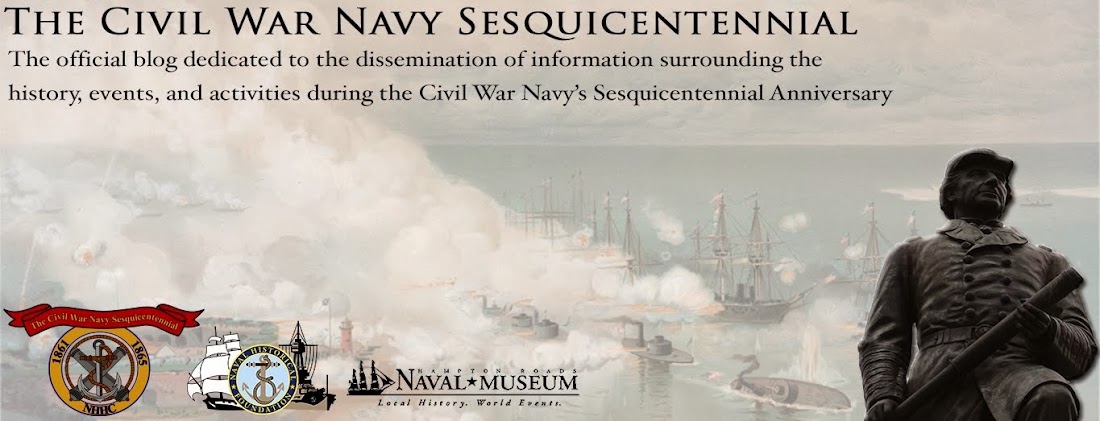 |
| The bombardment of Fort Clark by Cumberland, Minnesota, and Wabash. |
On August 26, 1861, the U.S Navy and Army's expedition to Cape Hatteras cleared Hampton Roads and navaigated south. Commodore Slias Stringham commanded the Navy's portion of the expedition that consisted of the steam frigates USS Wabash and Minnesota, the sail sloop-of-war USS Cumberland, the paddle steamer USS Susquehana, and steam gunboat USS Monticello.
Before leaving Hampton Roads, Stringham had received intelligence about the two forts that guarded the Inlet from recently released merchant ship masters. The Confederate garrison allowed the officers of the ships to roam the forts freely.
The attack began on the morning of August 28. With Wabash towing Cumberland, the two ships approached Fort Clark. From about 1,300 yards from the Confederate fortification, Wabash began the battle with her two pivot guns, both X-inch Dahlgrens, followed by Cumberland and Minnesota’s X-inch Dahlgrens. The rest of the squadron’s smaller guns then engaged. The squadron steamed in a clockwise circle south and then back to the north.
Flag Officer Samuel Barron had earlier travelled down from Portsmouth, Virginia to take charge of forts, called Forts Clark and Hatteras. Using guns captured from Gosport, Barron ordered his garrison to return fire. Finding Clark outgunned, he ordered that the garrison to retreat to Fort Hatteras. After several more hours, Barron believed the situation hopeless and surrendered. Stringham shipped the Confederate commodore and the garrison to prisons in the north.
Strategically, the capture of the two forts shut down privateering for good. It also opened up the North Carolina sounds to further advances. It also came one month after the Union debacle at Bull Run. As a result, the Northern press treated the victory as if the North had just won the war.
 |
| Fort Clark after being captured |


No comments:
Post a Comment